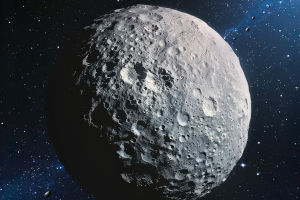Have you ever wondered what actually happens inside your body when you feel that flutter of attraction toward someone? That instant spark isn't just poetic magic—it's a complex dance of biochemistry at work.
From butterflies in your stomach to moments of deep connection, our hormones and neurotransmitters play starring roles in how we experience love and attraction, both romantic and platonic.
Let's explore the fascinating biological chemistry behind why we feel drawn to others and what those feelings really mean.
The Brain's Love Blend: Key Chemicals at Play
Love and attraction are not single feelings but phases involving different brain chemicals, each shaping the experience uniquely.
• Dopamine: The Reward of Desire
• Oxytocin: The Bonding Hormone
• Serotonin: Mood and Obsession
• Norepinephrine: The Excitement Driver
• Testosterone & Estrogen: The Desire Enhancers
Dopamine: Often called the brain's "reward molecule," dopamine surges when we see or think about someone we desire. It activates the brain's pleasure centers, much like addictive drugs, creating feelings of euphoria and motivation to pursue the person—this underlies that irresistible craving and excitement in the early stages of attraction.
Oxytocin: Nicknamed the "cuddle hormone," oxytocin is released through skin-to-skin contact and intimacy, such as hugging, kissing, or holding hands. It deepens emotional bonds, encourages trust, and helps couples build lasting attachments. Oxytocin also plays a role in platonic love and social connection beyond romance.
Serotonin: This neurotransmitter regulates mood and emotions but interestingly, in early romantic love, serotonin levels can drop, leading to obsessive thinking about a partner. That's why new love often feels all-consuming.
Norepinephrine: This chemical triggers physical signs of attraction like a racing heartbeat, sweaty palms, and flushed cheeks. It heightens alertness and energy, making interactions feel thrilling and intense.
Testosterone and Estrogen: These reproductive hormones fuel reproductive drive and influence attraction to potential partners. Testosterone, in both men and women, is linked to libido and assertiveness. Estrogen plays a similar role, particularly influencing female reproductive behavior.
How These Chemicals Create Different Kinds of Attraction
It's not just about romantic love; this chemistry also underpins what we call platonic or social attraction—a warm feeling toward friends, family, or groups.
• Romantic Attraction: Primarily driven by dopamine, norepinephrine, and serotonin, this phase involves heightened reward response, focused attention, and sometimes stress-related hormones that compel us toward a new partner.
• Attachment and Long-Term Bonding: Oxytocin and vasopressin take center stage in helping partners commit and maintain close bonds over time.
• Platonic Affection: Oxytocin promotes feelings of trust and warmth in friendships and familial relationships, helping sustain social networks crucial to mental health.
The Science Behind the "Butterflies" and Obsession
Why does attraction sometimes feel like a physical flutter or an all-consuming thought?
• Physical Sensations: Norepinephrine's role in the "fight or flight" response causes your heart to race and palms to sweat when you're near someone you're attracted to—classic signs of heightened arousal linked to approach behavior.
• Obsessive Thinking: Fluctuations in serotonin during early love phases mean the brain functions similarly to when people have obsessive-compulsive disorder, explaining why new love can be both euphoric and distracting.
However, as relationships mature, serotonin levels tend to normalize, and oxytocin fosters calmer, more secure feelings.
Why Does This Matter? Understanding Love's Biochemistry Helps Us
Recognizing the molecules behind attraction can:
1. Demystify Emotional Rollercoasters: We realize intense feelings of love or even heartbreak have a biological basis, not just "in the heart."
2. Improve Relationships: Awareness of attachment hormones like oxytocin encourages nurturing behavior that strengthens bonds.
3. Inform Mental Health: Understanding how love affects brain chemistry helps clinicians support those struggling with obsessive or unhealthy attachments.
4. Highlight Individual Differences: Hormonal and neurotransmitter variability partially explains why people experience attraction and love differently.
What About Beyond Chemistry? The Human Element
While brain chemicals lay the foundation, love is more than biology. Social context, personality, life experiences, and conscious choices shape how attraction develops and sustains. Our chemistry sets the stage, but how we act on those feelings defines our relationships.
Thinking About Your Own Experiences
Next time you feel drawn to someone or find yourself unexpectedly obsessed, reflect on the invisible chemical symphony playing out in your brain and body. How do these biological forces align with your personal story and relationships? Has understanding love's biochemistry changed how you view your feelings or your connections to others?
Love might start in the brain's chemistry, but it flourishes in our daily choices and interactions. What part of this scientific insight into love surprised you the most? How would knowing this change the way you approach attraction and attachment?


